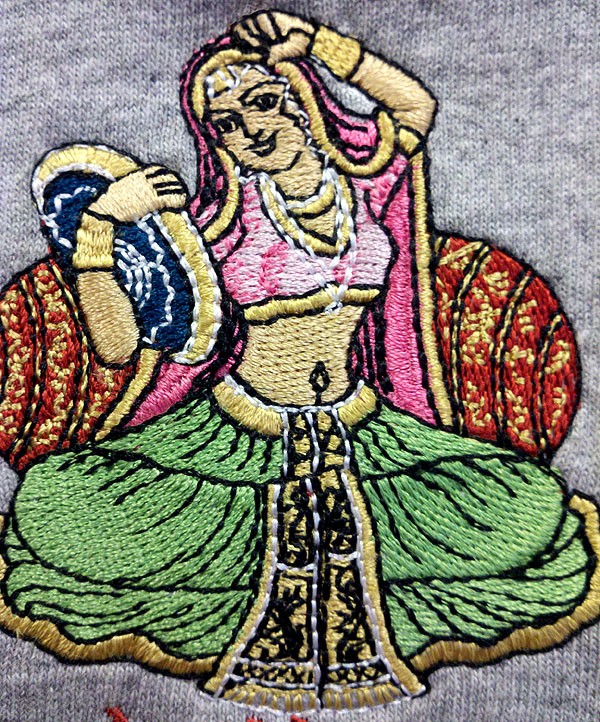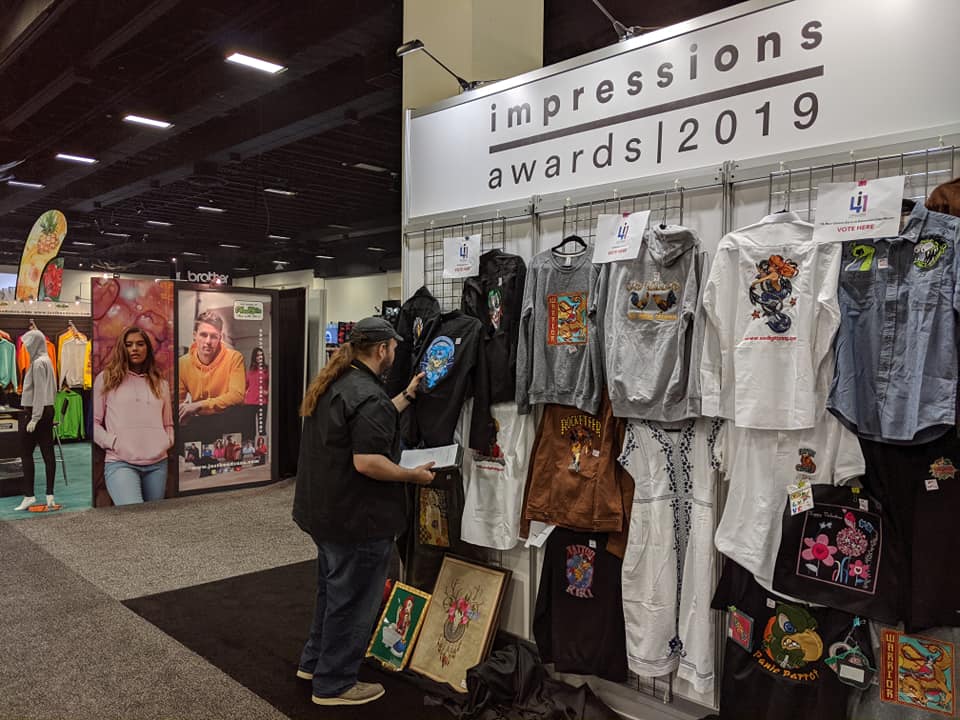
This year, I had the extreme honor of judging the embroidery portion of the Impressions Awards at the very last show to run under the longstanding Imprinted Sportswear Show or ISS name before the switch to the Impressions Expo branding. During the show, I represented the 2 Regular Guys podcast as their producer, spending time behind the camera as well as sharing the good word in the booth about our new education projects coming through the Decorators Community, but I couldn’t help but jump in front of the camera to answer some of the questions that my readers and viewers had about the way embroidery and embroidery digitizing contests are judged. For you video lovers, here’s a heaping helping of that messy, live broadcast action that you’ve come to know and love from the 2 Regular Guys and me, followed by a written run-down for my readers, complete with a discussion of the pitfalls you should avoid if you decide to throw your immaculately embroidered hat in the ring.
Judging Embroidery/Digitizing Contests: Under the Surface
Though I can understand the suspicion that such judgement is entirely at the whim of we clipboard-holding few, the truth is that we judge on several qualities as described to us in the contest’s official judging rubric.
Fit before Finish
First, we consider how well the submitted piece fits into the category in which it was entered. If the category is ‘Creative Use of a Logo or Mascot’, even a well rendered mascot may not win if the use of such is not creative. A perfectly executed standard left-chest placement on a polo shirt, with no particular deviation from the usual embroidery, scores worse in this category than one that is technically sound, though not without flaws, but which has used its logos, art assets, or an interesting placement in an uncommon and attractive way.
Difficulty, Design Placement, and Impact
Next, we run through a list of qualities relating to the rendering itself; though these qualities may change from contest to contest. Some qualities looked for at this specific show included how difficult the job was to execute, the appropriateness and correctness of the decoration’s placement on the garment/substrate, and the overall visual impact of the piece. Judging on these qualities as a whole meant that some very well executed pieces that scored highly for technical difficulty suffered from being too small/hidden or placed on a garment or in a position that didn’t make sense for design. The unfortunate truth is that many entries I’ve seen fulfilled one or two of the looked-for qualities quite well, but performed poorly in one or more of the others. In the most extreme cases, this seems some entrants neglected posted instructions for the contest or flatly entered pieces in categories to which they didn’t belong. For instance, if one enters a piece for a multimedia category which only contains standard embroidery without using additional processes or materials, that piece is likely to lose, no matter how eye-catching or beautiful it may be.

Poking at Production Problems
When I’d judged for the now defunct but well-remembered Stitches Magazine’s Golden Needle contests, our rubric included a review of the design files for production friendliness. In this instance, the problem contestants encountered wasn’t a disconnect between category and entry so much as an attitude that pieces should be attractive or impressive by any means necessary. By this, I mean that pieces arrived in the judges hands that looked impressive in photographs but in person were either noticeably rippled and ridged with excess density and distortion, or had files that obviously and unduly prioritized the look over the speed and efficacy of production. Digitizers
occasionally provided files so poorly created as to render the designs somewhere on a scale from unprofitable to unsafe to run in a production environment. Lovely embroidery that breaks needles is not production friendly. In that sort of contest, limping one’s way through tens of unnecessary color changes and constant thread breaks to create one masterfully attractive piece will net you an overall loss, as the digitizing and runability itself is critical to the overall success of the piece as scored.

Careful Consideration
Though addressing all of these qualities can seem daunting, I still encourage you to enter your work. After all, placement on the judging stand alone puts your piece in front of thousands of your peers and gets it evaluated by people who know good embroidery. What I would caution, however, is that you take the time before you send in an entry to carefully consider whether your piece fits the category in which you’d like to enter it, if your work is actually suited to the garment or substrate on which you want to stitch it, and whether it has the visual impact to grab the attention of judges and attendees alike. I want you to get creative, be bold, think big, and take your shot. My contest wins opened the door to writing, teaching, and serving this industry from all sides; who knows what opportunities your win might manifest?








LEAVE A COMMENT